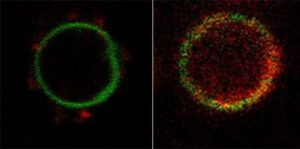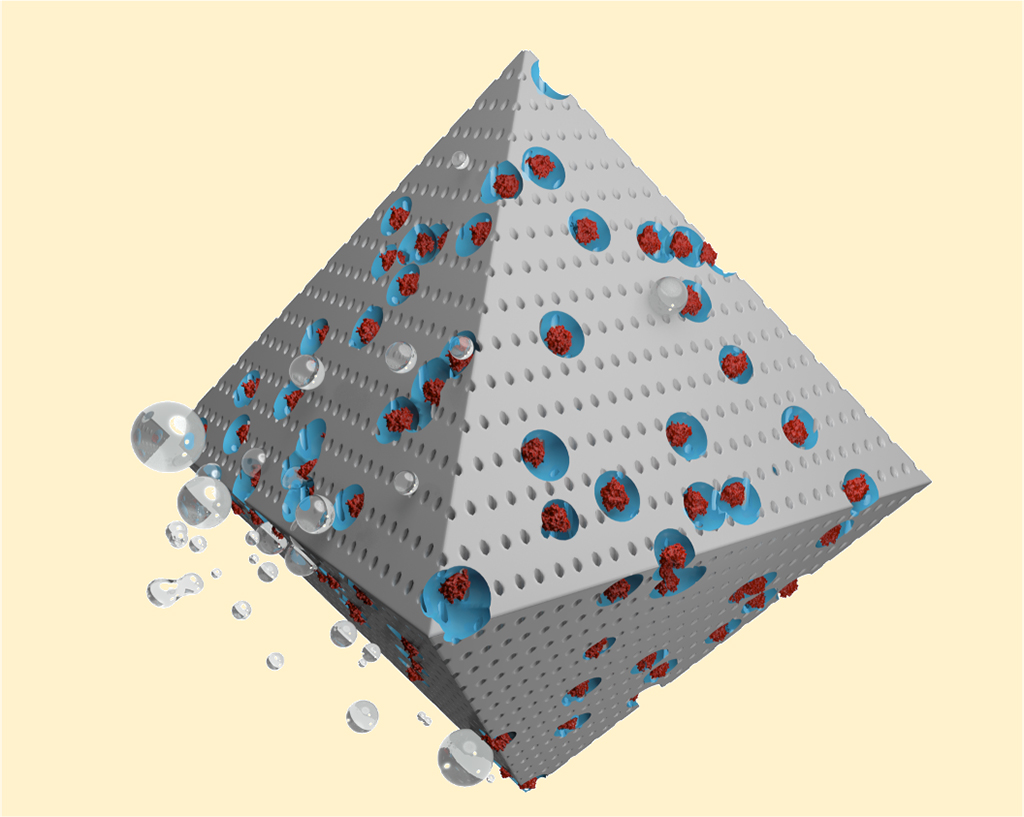Catalytic nanomotors are nanostructures that convert chemical energy into motion, showing great potential in biomedical and environmental applications. Once in a solution containing the “fuel”, nanomotors start to swim while performing tasks such as carrying drugs, sensing, penetrating cells and tissues and cleaning contaminated water. Using enzymes -organic molecules that accelerate the speed of biochemical reactions- as engines is an elegant and efficient way to generate energy for the propulsion of nanomotors. However, these enzyme-driven nanostructures may be exposed to adverse conditions, such as strong pH variations, harsh solvents, ionic species, and high temperatures, which could compromise both their movement and their functionalities. To overcome this issue, the groups from Prof. Samuel Sánchez (IBEC) and Prof. Daniel Maspoch (ICN2), have put together their expertise -nanomotors and nanochemistry- in two collaborative publications to provide nanomotors with new chassis, opening new avenues in this field enabling some applications never envisioned before.
The first one is called “Lipobots”, and comprises liposomes -spherical vesicles- containing urease enzyme in their interior. The researchers mimicked the journey of Lipobots towards the gastrointestinal track, where they would suffer from acidic conditions before reaching the bile salts. Surprisingly, the protective shell from the liposome maintains the enzymatic activity and the structure of the Lipobots at pH3. Thereafter, Lipobots were soaked in a solution containing a component of the bile salt present in the intestine, which opened the pores of the liposome leaving a thrust from the enzymatic reaction which in turn, provided the self-propulsion of Lipobots. In the second one, metalorganic frameworks (MOF) were synthesized so that two types of pores were generated, ones would incorporate catalase enzymes and the other one be available for the adsorption of contaminants like organic dyes while self-propelling (MOFtors). The high porosity, and dual functionality of the pores is of great importance for the creation of very active, multifunctional and mass-produced self-propelled microcleaners.

